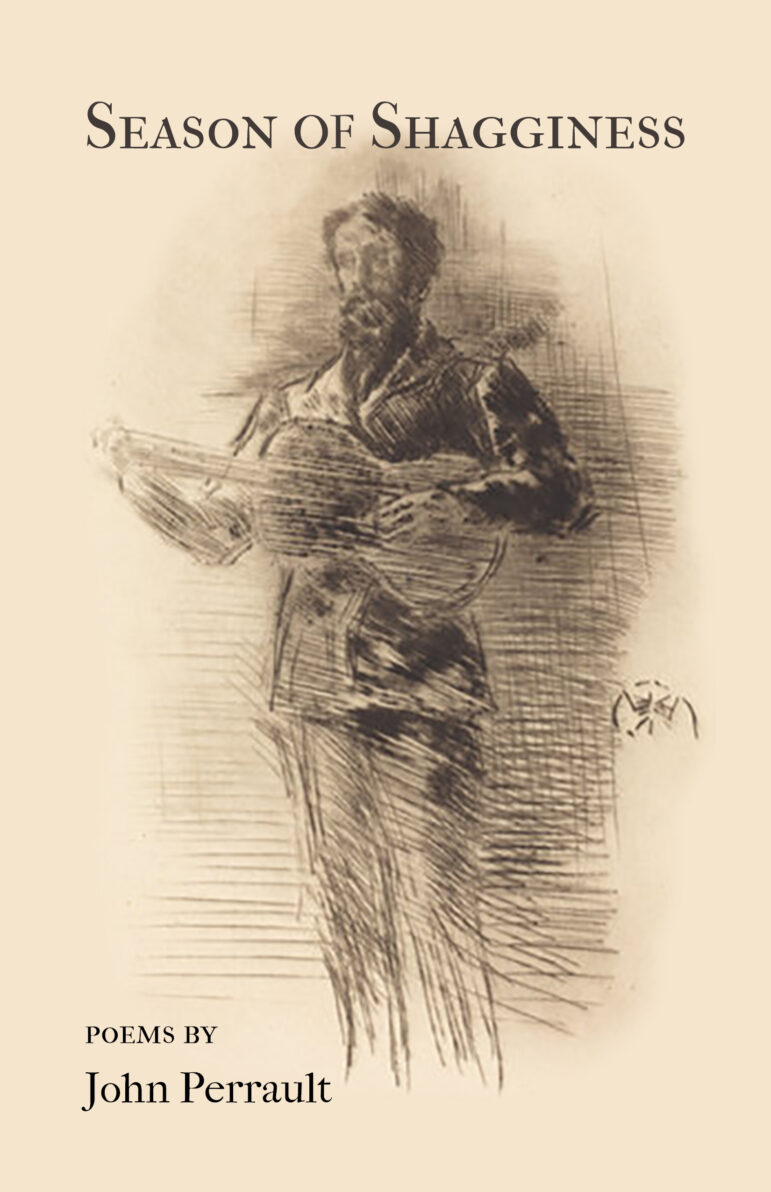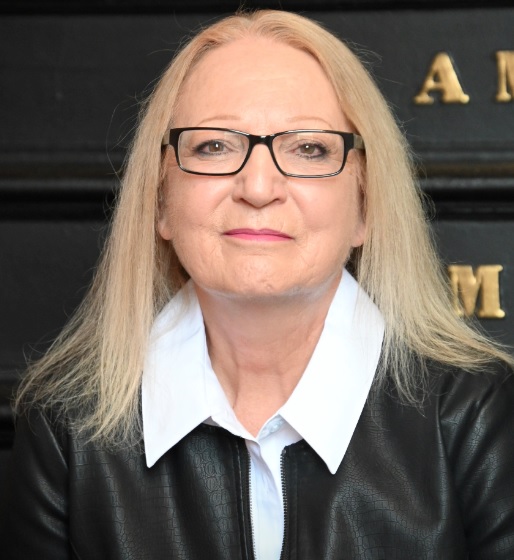By BEVERLY STODDART, A NH Writer’s Life
North Hampton, NH: John Perrault’s bio defines him as a balladeer, poet, author, and songwriter. From 2003 to 2005, he was the poet laureate of Portsmouth. I asked John to explain what being a poet laureate entails.
“I was the fourth poet laureate Portsmouth had, which started eight years before I was selected. I guess the program’s goal was to encourage communication among various aspects of the community to build community through poetry. It’s still going on. The poet laureate was given the assignment of doing some project to try and realize the abstract concept of what it was all about, building community. My project, which went on for a couple of years, was called Voices in Vision. What I did was I got a group of poets and painters together as a jury, and we solicited poems and paintings from various people in the community. Everybody was welcome to enter and try to merge a visual construct with a verbal construct. It resulted in a number of very interesting creations. A lot of them are paintings with poetry embedded right into the painting. Some of them were sculptures—some more esoteric creative craft-like things. I think we selected ten, maybe twelve, as sort of winners. Their works of art were to be placed around the community of Portsmouth. If you go to the bus station in Greenland just outside the airport, there’s a huge painting there with both a visual and a poem embedded in it. There’s one at the Portsmouth District Court. There’s still a number of them around town. The goal was to keep them there. At the end of the two years, everybody got together and discussed it.”
The very accomplished Perrault has over fifty poetry publications to his credit, along with books, anthologies, recordings of his songs, and countless program presentations. He started his career teaching high school students before going to Franklin Pierce in Concord, NH, for a law degree. That led to thirty years of practicing law in Portsmouth and Maine.
“I was in a small office on Market Street with John Ahlgren. I was mostly a trial attorney. I was doing mostly civil and criminal work in the District Courts and the Superior Courts in Maine and New Hampshire. I worked as a public defender briefly.”
John created a significant project through Hobblebush Books 2009 called Jefferson’s Dream that combined song and prose.
“Jefferson’s Dream came about from my teaching and my reading and thinking, and I wanted to focus on a concept of American history in terms of its language, its foundational documents, and its interpretation by great writers and great thinkers in American history. I think the greatest one was Abraham Lincoln. I have a chapter on Jefferson. The chapters are two to three-page essays and are accompanied by a song or ballad about that person. I have Harriet Tubman, Lincoln. Frederick Douglas, Elizabeth Cady Stanton, Eleanor Roosevelt, Henry David Thoreau, and Ida B. Wells. Taking incidents of history in which they were involved and trying to dramatize something specific about their lives and what made them tick.”
“I wrote a song called “Lynching at the Curve.” Sometime in the late nineteenth century, in Memphis, Ida B. Wells was active in civil rights, which was very dangerous at that time. She founded a newspaper, and she had some Black friends who had opened up a grocery store at a place where the trolley curved around a corner down on Main Street. For years it had been a grocery on one side of the road run by white people. These Black friends opened up their store on the other side of the curve. It got very contentious. They heard one night there was going to be a break-in to try and trash the place. So, they hid in there with guns, and there was a gunfight, and the blacks got arrested, thrown in jail, and then dragged out and lynched.”

We moved our conversation to his current book, Season of Shagginess, and I asked him where the title came from.
“The title came from “Odiorne Point.”
Season of shagginess then. Call it that.
And I do: for the dead leaves
Piling in ditches-the milkweed
casting loss to the wind. For the old man
I just came across scuffing along
the trail under creaking trees,
under woolly skies, nodding to the sedge,
weaving himself into the sheer fabric
of fall. Watching. Waiting. How clear it all is to me now.
“The whole notion of time, death, but how wonderful to be alive. How wonderful to be out there even knowing this doesn’t last, which makes it all the more precious. I sort of pat myself on my own back because I love that line season of shagginess. I called the book that because a lot of the book is centered on how precious life is and the loss of it. I lost my wife two years ago, and I focus on that in the mid-part of the book.
I say, “The cover is almost shaggy. Is that what the artist had intended? It’s perfect.”
“No, I agree with you. It’s shaggy and sad, sort of. But no, it’s by James McNeill Whistler, the painter who did Whistler’s Mother. The original is at the National Gallery in Washington, DC, and the National Gallery makes a lot of its public domain works available for use for such things. I was digging through their public domain files and trying to get a feel for what I would like to see on the cover when I came across that. I thought that’s what I want. It was done in 1875. The Guitar Player is the title.”
For the article, I chose three poems that I especially loved and said, “Let’s start with “Walk by the River,” which is listed as a song. John said he likes to think of it as a poem and a song.
“I wrote the song when my sister was Roseanne in hospice. I was thinking of her when I was writing it. She never got to hear it because she passed before I finished it. Life continues. The whole thing about loss is the environmental aspect of the song. We’re in critical times, it seems to me. We have to pay attention to our natural resources. I’m also trying to touch on the possibility of hope. When I’m talking about anything of beauty that is of value always is the flip side of the potential loss. The rose has the briar. And whoever said the course of true love never ran as smooth.”
The next poem we discuss is “Poem for Arnold.” The lines I pulled out were:
Make hay or get out of the way,
Somebody said once-think it was you.
Sounds like you.
For Christ’s sake, give it your best shot.
Hey, didn’t we do that?
I asked John to tell me about Arnold.
“Arnold was Roseanne’s husband. He was a wonderful guy. I grew up in relatively comfortable circumstances. My father was a general practitioner and had an office in the house. We lived in downtown Biddeford, Maine. My father suffered a terrible injury early in his practice. I was about four years old. He was thrown out of an ambulance. It knocked him back from his practice for about two years.”
“Everybody in the family was expected to do well in school and go on to college. The plan was sort of laid out. Arnold came from a family where the father had left. The mother had three boys, and it was a hard scramble life that he grew up in. Arnold went to the same grade school as me, but he was three or four years ahead of me, along with my sister, Roseanne. That’s when they knew each other. And then Arnold disappeared after grade school. I don’t see him around. He went to the same high school but was out by the time I entered it. Then in the army, and he’s gone. He comes back to town a few years later and meets up with my sister again, who is now a teacher in the local school, and they get married.”
“Arnold tries to pull himself up by his bootstraps since he had no formal education beyond high school. He’s working hard during the day at various odd jobs and going to school at night. He got a job in an insurance company. He finally gets a business degree from the University of Maine in Portland. Putting on a white tie and a shirt for him is torture. This goes on for a couple of years, and he finally said, I’m not doing this anymore. I’m going to be a carpenter. That’s exactly what he did, and he made a really good living. He was an excellent carpenter. He was his own man. He had his own truck. He had an old New England farmhouse, and he had a barn. He built a room for shooting pool. He built a tennis court. We’d battle each other on the tennis court, and he’d always beat me. When Roseanne retired, he gave up carpentry for a while, and they both went into the Peace Corps. They went to Honduras, and they lived up in the mountains with the Indians. Arnold got injured after a year and a half and had to be flown back to the states for surgery. My sister stayed down there for another couple of months. And they said no, you’ve got to come back because this was a team project, and you can’t be alone. They put in, and they gave a lot back. When my sister Roseanne died, Arnold got quite ill. I got a copy of the manuscript before he passed. But the book came out after he passed. It was my personal tribute trying to lay out how we related to each other. He was a man of wood and nails, hunting and fishing, and I had grown up with books and all that stuff.”
The last poem I wanted to talk about was “Grief.” I explained to John what happened when I read the poem. I read this poem, and then I cried. I pulled myself together, and I read it again, and I cried again. Admittedly, there is weepiness in my family, I confessed. He paused for a while before talking about the poem. John and Holly had been married for sixty-two years. It’s a beautiful poem.
“It’s a tough one to talk about. It doesn’t go away. I think what poets do, among other things, is to try and make sense of what happens, to make sense of experience. And as it happens, it’s a blur. So you go back, and you struggle with it to try and make a little sense out of the whole thing. When I find myself writing about her, she’s with me. It just somehow is comforting. It’s kind of sad to do it at the same time. That line, grief is the price you pay for love, couldn’t be truer.
From John Perrault’s “Grief.”
For no more reason than for one more time
to take the time to feel each other’s pulse.
But since September 5th the curtain has
been torn. I haven’t heard a word from you.
I’m waiting, Holly. I’m barely holding on.
“Season of Shagginess” can be found at Amazon.com for purchase. Visit JohnPerrault.com for more information about the author.

Beverly Stoddart is a writer, author, and speaker. She recently launched a new Zoom series talking with New Hampshire writers called The First Line. After 42 years of working at newspapers, she retired to write books and a blog. She is on the Board of Trustees of the New Hampshire Writers’ Project and is a member of the Winning Speakers Toastmasters group in Windham and the Ohio Writers’ Association. Her latest book is Stories from the Rolodex, mini-memoirs of journalists from the 1960s, 1970s, and 1980s. A prized accomplishment was winning Carl Kassel’s voice for her voice mail when she won the National Public Radio game, Wait Wait…Don’t Tell Me! She has been married for 45 years to her husband, Michael, and has one son and two rescue dogs





